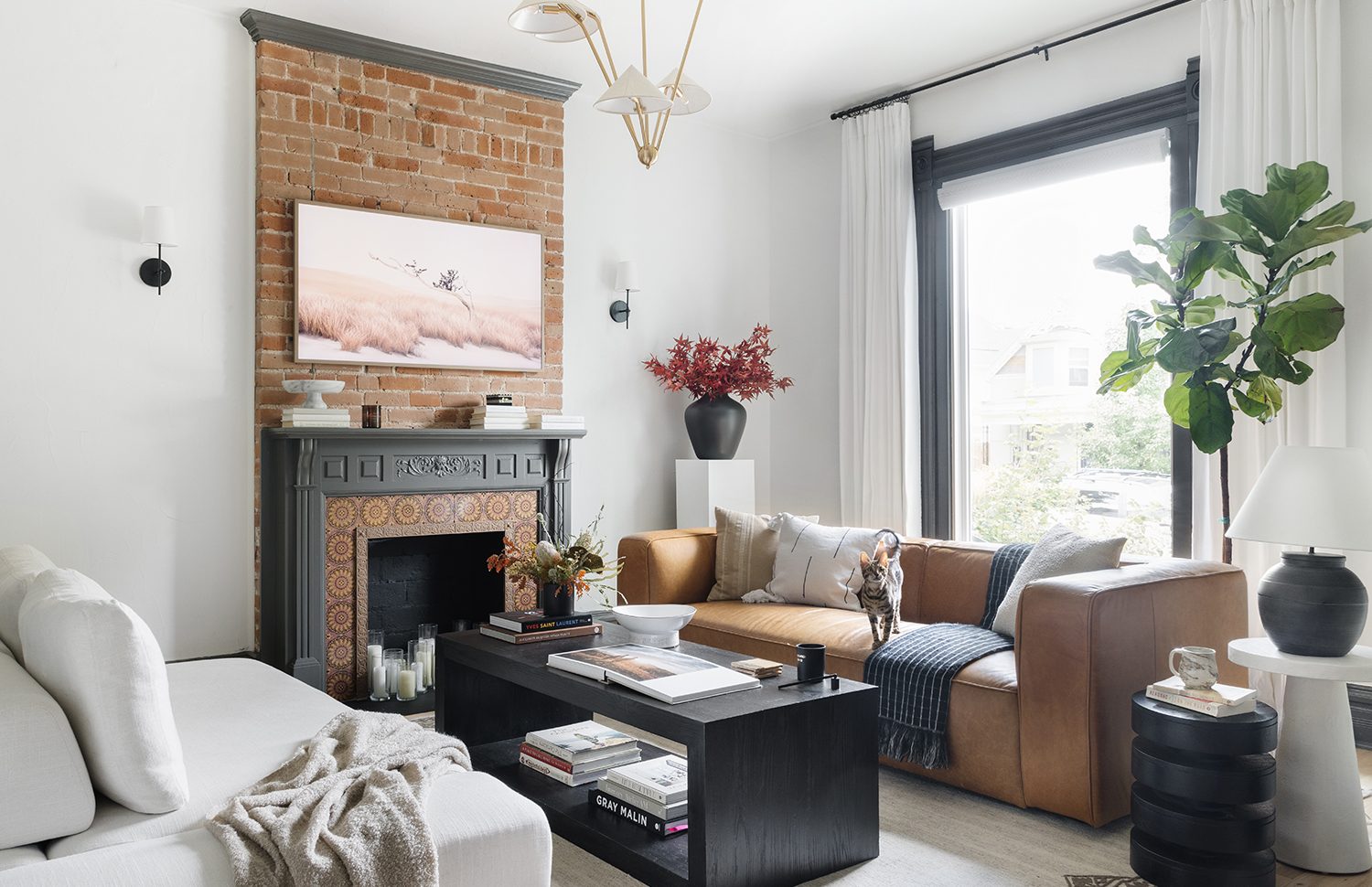We’ll say it: TVs aren’t very aesthetically-pleasing. When decorating a blank wall, for example, we’d likely reach for artwork, mirrors, sconces, wall hangings, shelving, and the like before opting for a large black box.
But if we’re being honest with ourselves, our love of Netflix binges and movie marathons trumps our desire for a 100% design-forward home. While TVs don’t exactly align with our decor style, they most definitely align with our personalities in general. Plus, we’d argue that the most practical and thoughtfully-designed spaces include time-honored creature comforts, TVs included.
Plus, with a few pro tips and design tweaks, you can get the best of both worlds: the drop-dead-gorgeous space you want, with the TV you need. But before we dive in, a brief reminder: TVs are always measured diagonally — from the top left corner to the bottom right, or vice versa.
Without further ado, Havenly designer Melissa Wagner shares the common mistakes and pro tips for creating a design-forward TV den, from the basics (like how to measure a TV for your space) to the finishing touches (like gallery wall backdrops).
Tip 1: Adjust your seating
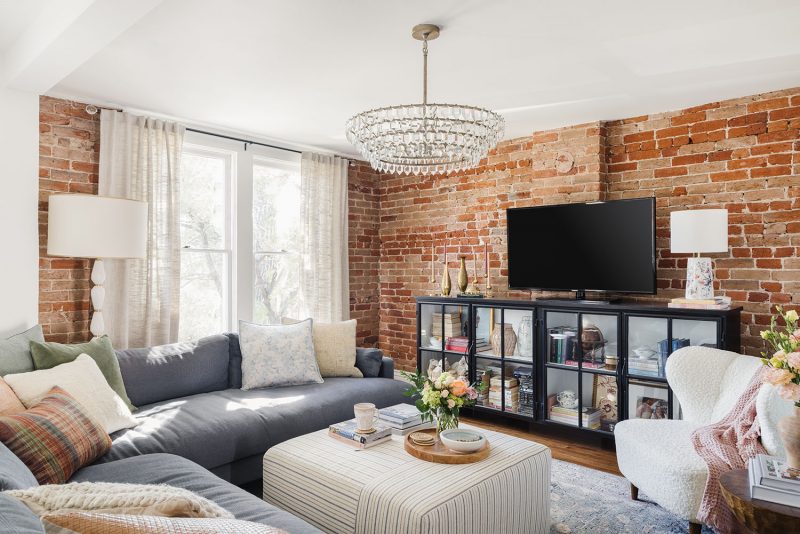
To create an optimal in-home viewing experience that rivals the theater, you have to find the right amount of distance between your TV and seating. According to major tech retailers, you should multiply the size of your TV screen in inches by 1.2 to 2.5 to get your optimal viewing distance. Here’s an example: my 65-inch TV at a 1.2 viewing distance equals 78 inches, or 6.5 feet. After toying with this equation, Havenly designer Heather Goerzen settled on 9.5 feet between her 65-inch TV and her sofa (or 1.7).
Tip 2: Make sure your TV is proportional to your media unit
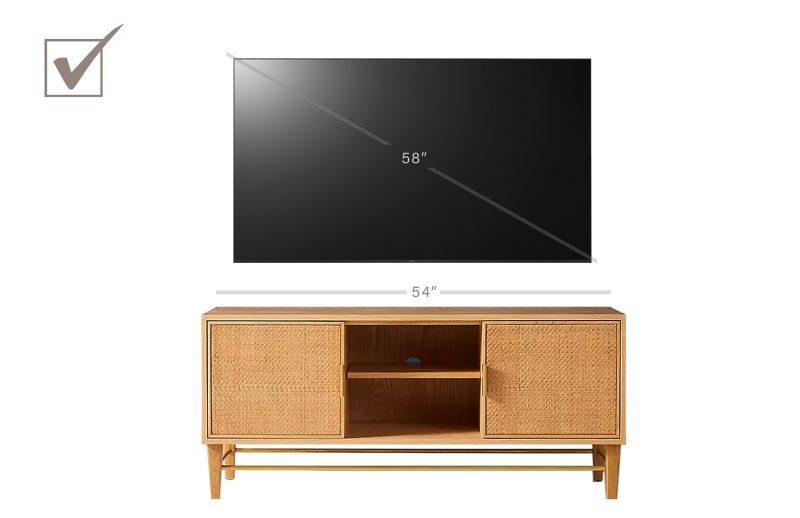
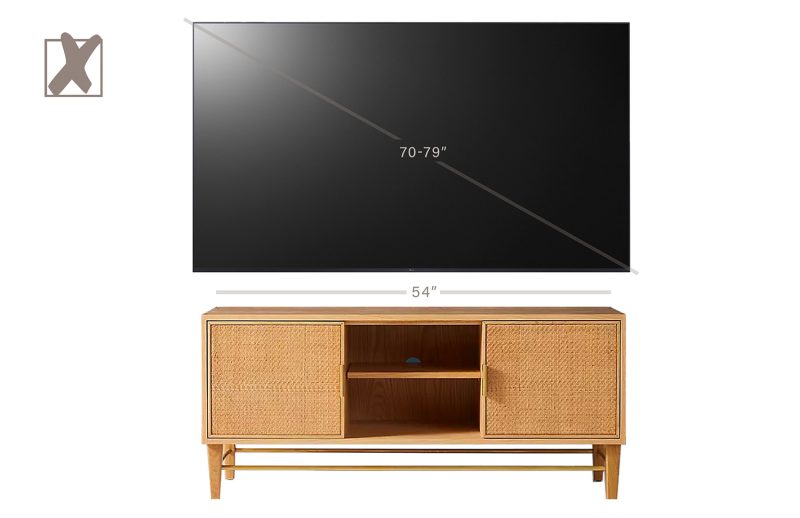
This is by far the most common design mistake we see when styling TVs, and doing it correctly is essential to creating an aesthetically-pleasing TV setup. Generally speaking, your TV should always be smaller than your media console, even if it’s just a few inches. Best case scenario, your TV will span roughly 2/3 the width of your media unit (remember the Golden Ratio?). For example, a 65-inch TV actually measures 57 inches across, so an 86-inch console would look great! When in doubt, always size up and never down — a TV stand that’s the same size or smaller than the actual TV is a hard no.
Tip 3: When in doubt, tape it out
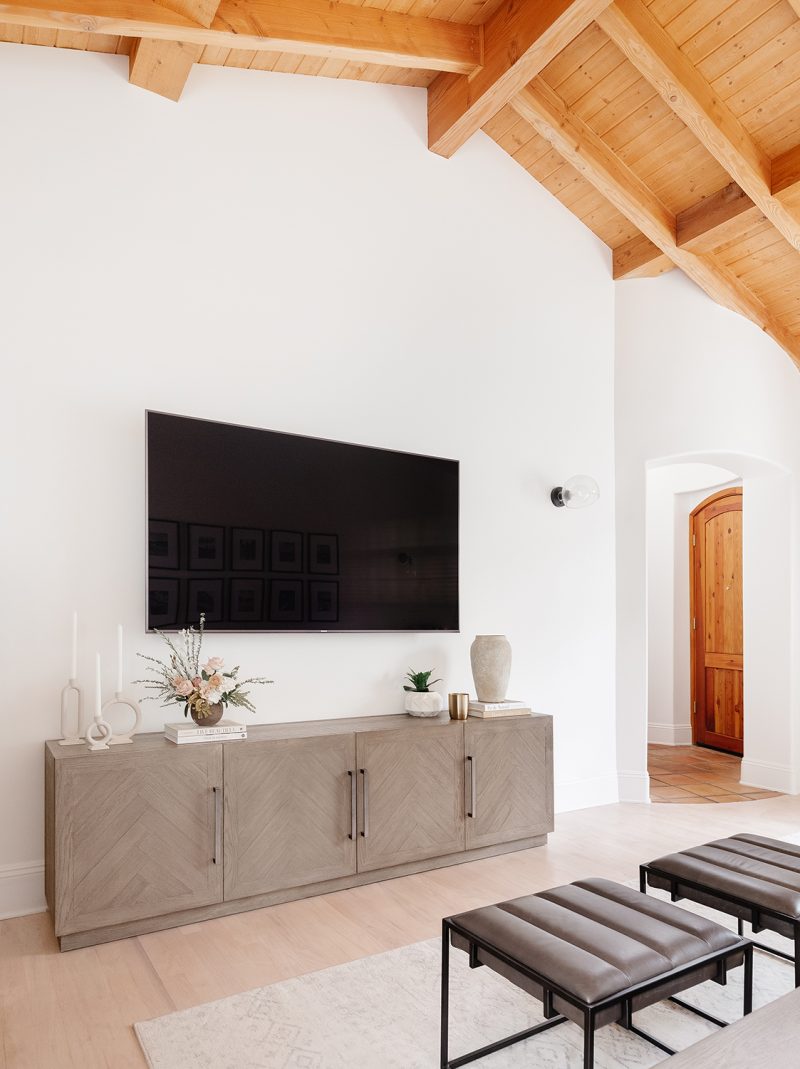
If you’re unsure about which size TV or media unit to buy, tape it out! Before making what could be a large purchase, use painter’s tape to create an outline of the TV or media console size(s) you’re considering. Sit with it for a day or two before making your final decision. Pro tip: if you’re debating between two different media consoles, go with the larger one — more space just means more room for decorative accents like vases, books, and greenery!
Tip 4: Consider a gallery wall

Not really a TV person, but interested in having one for those rare Netflix binges? Go with a smaller TV and build a decorative gallery wall around it. The Samsung Frame TV is obviously a top choice for this look, but any standard wall-mounted TV will work just fine. When selecting a media console or sideboard, consider the overall width of the gallery wall versus the standalone TV.
Tip 5: Lean into the surrounding architecture
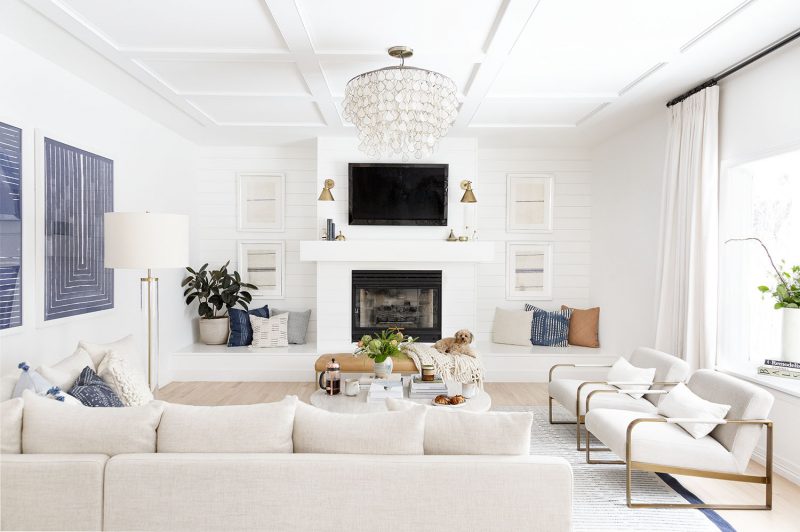
Some rentals and homes have an architectural TV niche already built in to the living room or den. In that situation, we recommend leaning into the feature with an appropriately-sized TV. Rather than trying to hang your TV elsewhere or going with tech that’s too big or too small, complement the built-in with a TV and accent furniture that fits the space.
Looking to make over your TV den? Our designers can help — get started with our style quiz.

